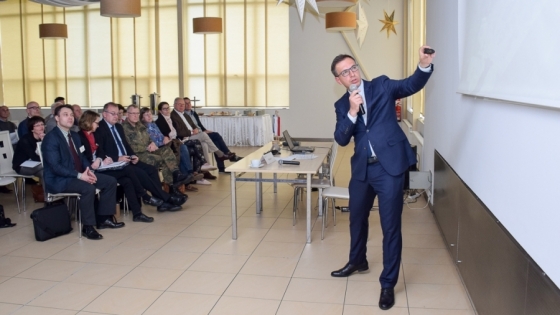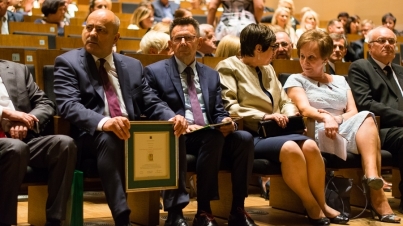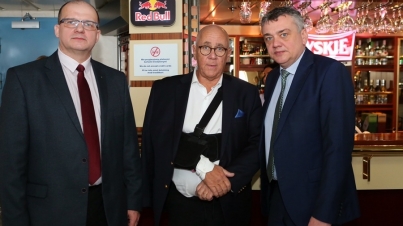News
News
People
Presentations
After Hours
Calendar
Currencies
Galleries
Advertising
About us
Contact
Adressess
Newsletter
Euroregional port
Can DB Port Szczecin be used by Meklenburgian companies? Can inland waterways transport be developed so as to bring goods to and from Szczecin using inland water vessels? Among others, these topic have been discussed during the recent IHK Neubrandenburg meeting.
 Paweł Wac, president of the management board of DB Port Szczecin Sp. z o.o.
/fot.: mab /
Paweł Wac, president of the management board of DB Port Szczecin Sp. z o.o.
/fot.: mab /
The IHK Neubrandenburg meeting was held in Kantyna Portowa in Szczecin on 09 May 2017, under the motto “DB Port Szczecin – the gate to the Baltic Sea and to the world”. It attracted 70 guests, and the majority of them also used the opportunity to make a tour of the Szczecin port.
DB Port Szczecin sp. z o.o. belongs to the Deutsche Bahn AG Group and it employs approx. 300 people. The company specializes in LCL (inter alia, steel, non-ferrous metal, granite, paper and cellulose goods) and container transhipment, and it has the status of a customs free zone. In 2016 it transhipped 1 million tons LCL and circa 90,000 TEU (about 50 thousand units) containers.
“We are hoping to exceed 100 thousand TEU this year,” said Paweł Wac, president of the management board of DB Port Szczecin Sp. z o.o. during the meeting. He discussed the capabilities of the company, its history, the services offered, and the projects carried out over the recent years (worth more than PLN 85 million). He also talked about the company’s plans for the nearest future, e.g. the construction of a new tent hall.
“We are the largest Polish and second largest European granite blocks transhipment centre,” says Paweł Wac. “For Russian companies, we are the aluminium transhipment port of choice. We are also closest in distance to five capital cities: Berlin, Prague, Bratislava, Vienna and Budapest.”
The meeting participants wanted to know whether German companies used the ports’ transhipment capabilities.
Paweł Wac: “I would be very pleased if more German clients used DB Port Szczecin. We need to get rid of the mind-set that Polish enterprises need to use a Polish port for transhipment, and German enterprises - a German one. From the perspective of economy, there are no borders today.”
At present, the services of the port are also used by German clients, but most of them are not located close to the border.
“Why not use DB Port Szczecin’s offering in our region? The German clients should seriously consider this possibility,” argued Torsten Haasch, president of IHK Neubrandenburg, who hosted the meeting. He asked, inter alia, whether the distance between the port and the sea and the need to cover approx. 68 kilometres of water track to get to it could pose a problem.
In response, President Paweł Wac invoked the example of Hamburg. “The client can calculate the costs and estimate the pros and cons. If good quality transhipment is needed, covering the water track should not be a problem.
Torsten Haasch and Jörn Klitzing, the leader of Eberswalde IHK Ostbrandenburg branch, also asked what volumes of goods transhipped in Szczecin were transported further by inland waters. In response it was announced that until 2020 certain projects were scheduled to facilitate inland waterways transport.
“Today it is possible to transport even two-storey containers by inland waters to Berlin,” says Jörn Klitzing. “They could travel by the Odra river, for instance from Berlin or Rotherham, and be unloaded in Szczecin.”
IHK Neubrandenburg meetings have been organized for the representatives of Polish and German local authorities and entrepreneurs for the past 15 years by IHK Neubrandenburg business chamber and Dom Gospodarki in Szczecin.
ata
Wszystkich rekordów:












































